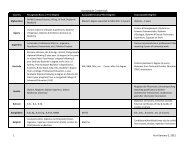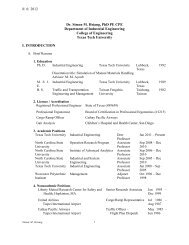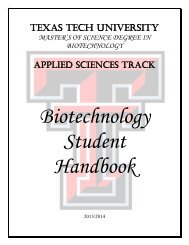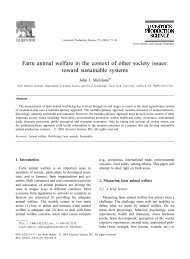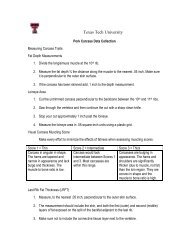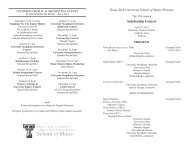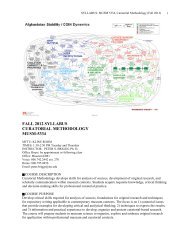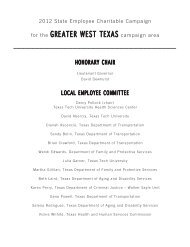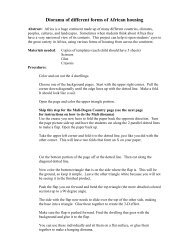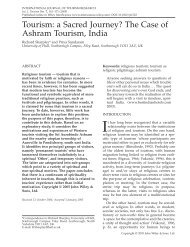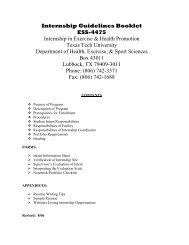Development of Tour Uriely 2005
Development of Tour Uriely 2005
Development of Tour Uriely 2005
Create successful ePaper yourself
Turn your PDF publications into a flip-book with our unique Google optimized e-Paper software.
208 THE TOURIST EXPERIENCE<br />
In addition to their tendency to homogenize the experience as a<br />
general type, most <strong>of</strong> the early theorists were unified in their notion<br />
<strong>of</strong> tourism as a modern phenomenon. Nevertheless, studies were dominated<br />
by two competing standpoints in early days. One side <strong>of</strong> the debate<br />
took the form <strong>of</strong> social criticism, in which tourism was perceived as<br />
another example <strong>of</strong> cultural decadence in modern capitalist societies<br />
(Barthes 1972; Boorstin 1964; Turner and Ash 1975). According to this<br />
approach, the tourist experience was viewed as a superficial and trivial<br />
quest for ‘‘pseudo-events’’ and artificial attraction. The opposing conceptual<br />
approach was primarily presented by MacCannell (1973) who<br />
conceptualized the experience as a meaningful modern ritual which<br />
involves a quest for the authentic. The polemic between these two perspectives<br />
was manifested in MacCannell’s direct attack against Boorstin’s<br />
standpoint, to which he referred to as a snobbish attitude rather<br />
than an academic analysis that is based on empirical research (Mac-<br />
Cannell, 19731973:600). This attempt to de-legitimize the competing<br />
approach illustrates the noncompromising style <strong>of</strong> discourse <strong>of</strong> the<br />
early theories.<br />
A change in the style and form <strong>of</strong> theorizing has been noticeable<br />
since the late 70s and the early 80s, with the appearance <strong>of</strong> academic<br />
publications that associate contemporary tourism-related practices<br />
and experiences with postmodernist culture (Baudrillard 1983; Eco<br />
1986; Featherstone 1991; Lash and Urry 1994; Munt 1994; Pretes<br />
1995; Rojek 1995; Urry 1990). In this context, the term ‘‘postmodern<br />
tourism’’ was utilized with regard to a variety <strong>of</strong> developments, including<br />
the emergence <strong>of</strong> alternatives to the conventional mass tourism;<br />
the flourishing <strong>of</strong> nature-related and environment-oriented holidays;<br />
the growing attraction <strong>of</strong> nostalgia and heritage related sites; and the<br />
growing quest for simulated and theme-oriented tourism attractions.<br />
In spite <strong>of</strong> this inconsistency in the usage <strong>of</strong> the term ‘‘postmodern<br />
tourism’’, it is possible to point toward two main developments associated<br />
with the postmodern era: the ‘‘simulational’’ and the ‘‘other’’<br />
postmodern tourism (Munt 1994; <strong>Uriely</strong> 1997). The former is focused<br />
around ‘‘hyperreal’’ experience and refers to simulated themeparks<br />
and other contrived attractions as typical postmodern environments<br />
(Baudrillard 1983; Eco 1986; Featherstone 1991; Fjellman 1992; Gottdiener<br />
1995; Lash and Urry 1994; Pretes 1995; Urry 1990). Conceptualizations<br />
<strong>of</strong> the ‘‘other’’ postmodern tourism stress the search for the<br />
authentic and point to the growing appeal <strong>of</strong> the natural and the countryside<br />
as postmodern expressions (Barrett 1989; Munt 1994; Poon<br />
1989; Urry 1990).<br />
The distinction between the ‘‘simulational’’ and the ‘‘other’’ appears<br />
to follow the aforementioned polarity within the earlier theories.<br />
While the ‘‘simulational’’ development follows Boorstin’s notion <strong>of</strong><br />
‘‘pseudo-events’’ (1964), the trend toward the ‘‘other’’ is compatible<br />
with MacCannell’s argument regarding the quest for authenticity<br />
(1973). However, unlike the earlier notions <strong>of</strong> modern tourism, the<br />
two dimensions <strong>of</strong> postmodern tourism do not derive from two opposing<br />
camps <strong>of</strong> scholars. On the contrary, some <strong>of</strong> the important views<br />
include both the ‘‘simulational’’ and the ‘‘other’’ dimensions in their



